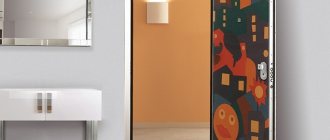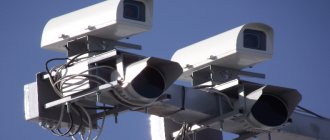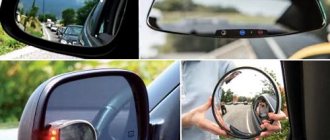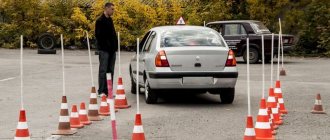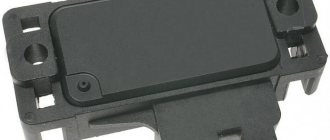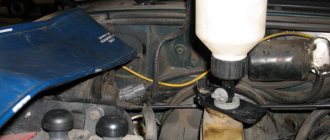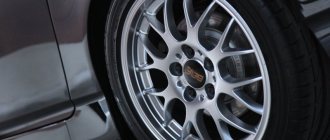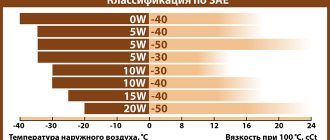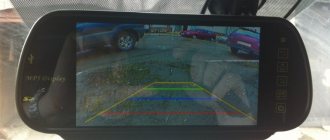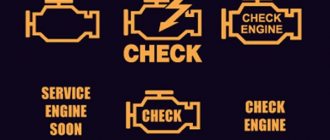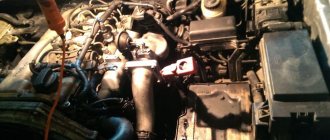Complete painting of a car body is a long and rather complex procedure, consisting of several stages, carried out in a specially designed chamber. Today, if you wish, you can find a large number of service stations that carry out car painting work. Despite the intense competition in this service sector, the cost of painting a vehicle at a service station is quite high, while the quality of the work performed does not always meet the declared high level.
Painting the car yourself can be an alternative solution to this problem. An important point in this situation is a clear understanding of how to make a paint booth in the garage on your own.
To understand what requirements apply to the room in which the car will be painted, you should understand the stages of painting work.
Thermal insulation of the room
Surely, the majority of those who are ready to start creating their own camera are not ready to buy a special room for this purpose. Such people are most often concerned with the question of how to make a paint booth in the garage. And that's not a bad thing. Just keep in mind that most garages are not heated in any way and do not have even the slightest thermal insulation. Therefore, you will have to take care of ensuring the required temperature in the room (20-25 degrees).
If you still decide to organize a camera in a specially selected place, select brick structures. Since from a safety point of view, brickwork is the most practical thermal insulation.
Those who will nevertheless paint cars in the garage must responsibly approach the choice of thermal insulation materials
Polystyrene foam and polyurethane foam
Many craftsmen like to use these materials for thermal insulation. It seems that everything is simple: cover the walls with foam plastic, foam the cracks and no draft will pass through.
However, do not forget that these substances ignite very easily. Considering that when painting a car you will have to work with flammable chemicals, one can only guess what the consequences of such frivolous insulation may be.
Wood
Some line the walls with shingles or other layers of wood.
Although this material is also prone to burning, it does not react as strongly to contact with chemicals as polystyrene foam or polyurethane foam.
Non-flammable polymers
The safest method of thermal insulation. Resistance to high temperatures in polymers is formed with the help of substances such as nitrogen-containing, halogen- and phosphorus-containing flame retardants.
At the same time, if you are not indifferent to the environmental friendliness of materials, the last two options should be excluded.
cotton wool
Of course, we do not mean the cotton wool that is sold in the pharmacy. For insulation, you can use glass, stone or slag varieties of this material.
It is also quite resistant to high temperatures and is the right material for you.
For thermal insulation, it is recommended to build two walls (for example, from plasterboard), located at a distance of about two centimeters from each other. Fill the empty space with insulating material. It should be remembered that if you have chosen flammable materials, you will have to take care of their reliable protection from possible sparks.
Basic requirements for the premises
Regardless of whether you use a garage to equip your PC, or plan to build a paint booth yourself, this room has a number of special requirements:
- the structure must be well insulated using high-quality materials and technologies;
- if you want to service any passenger cars, the height of the room must be at least 3 meters with a width of 6 meters;
- The inside of the wall must be covered with a special film that has the effect of accumulating a static discharge, attracting and holding dust particles. They are the main antagonist of painting works. This film can withstand up to 15 full painting cycles, after which it is replaced with a new one;
- the tightness of the chamber is one of the basic requirements for such premises that require high cleanliness;
- Particular attention should be paid to fire safety, since paint and varnish materials are classified as flammable.
As you can see, the requirements for the construction of a spray booth are really specific, but quite feasible.
Ventilation
Perhaps the most important system in a paint booth is ventilation. Not only the final result of painting, but also the health of the person working on the car will depend on proper air circulation.
The hood in the spray booth must ensure that all harmful substances are removed from the air. To do this, the ventilation system must be created strictly according to the rules.
Some craftsmen limit themselves to a fan in the chamber. There is no need to follow their example. It is better to take care of air removal once and then not have any problems with air pollution in the room and the settling of work dust on the fresh paint of the car.
Pipes
Even in a small garage you cannot limit yourself to just one pipe. There should be at least two of them. But it would be good if there were more of them. No area in the garage should be left without air circulation. Therefore, you should carefully consider the location of the pipes.
It is best to place the pipes above the main objects so that air can be drawn from there faster.
It is necessary that in an hour all the air in the room is renewed at least ten times. Look at the dimensions of the chamber and determine how many pipes can cope with this task.
Under the place where the car will be located, you should dig a trench and lay gratings. Paint and dust will get there.
Supply fan
An air filter must be installed on the supply fan.
It is more advisable to install a dust filter at the internal level. Ideally, it should clean the incoming and outgoing air. A filter should be installed in front of it to filter out large particles. If you decide to use only a fine cleaner, you risk having to worry about changing it. It will regularly become clogged with large elements.
When installing a spray booth hood, pay attention to the power of its fan. The supply fan should be approximately twice as powerful.
And make sure that, if something happens, replacing a clogged filter does not ruin the entire work process. It should go quickly.
Other details
For better air circulation, you can install a heater at the outlet, a damper for regulating pressure, an indicator for the presence of high pressure and a carbon filter that will clean the air from paint and dust trapped in the trench under the car.
How, ideally, ventilation should be arranged in a paint booth, you can see in Fig. 1.
How to assemble a paint booth with your own hands
For those who would like to equip a spray booth with their own hands, here are the main things to consider:
- The walls of the chamber must be smooth, washable and made of fire-resistant material, and also provide reliable sealing of the working area.
- Most chambers are made from profiled steel sheets, protected with paints or metal coatings and coated with fire-resistant materials that also have insulating properties. To reduce heat losses, the walls of the paint booth should consist of two layers filled with heat-retaining and non-flammable material.
- The floor of the chamber must ensure air circulation and removal during work. To do this, the floor of the chamber is made entirely of gratings or with one or two rows of gratings above the air duct pit.
- Exit and emergency doors of the cell must be made of fire-resistant material. They must provide a reliable seal to prevent external dust from entering the freshly painted surface. Also, the doors should be easy to open from the inside to allow the painter to leave the premises in an emergency in case of emergency.
- Modern repair paints are designed for application in dry air. Some types of paints cannot withstand high humidity (acrylic polyurethane and polyurethane paints).
- Lighting is done in such a way that there is no shadow in front of the painter doing the painting. It is preferable to install fluorescent lamps.
- Ventilation should ensure that the air in the cabin is renewed once a minute with heated air, while for the quality of the work being carried out, it is necessary to provide a downward flow of air that prevents paint dust (fog formed when applying repair paint with a paint gun) from getting onto the freshly painted surface.
- The cabin must be sized to allow easy work around the vehicle and the ability to maneuver without the risk of a collision.
- The chambers differ from each other not only in size, but also in the method of ventilation and heating. Ventilation methods may vary. The air is exposed to two fans, which are made with a screw turbine or a centrifugal one. A screw fan is equipped with a turbine, the blades of which are screwed into the air like an aircraft or ship propeller. They are capable of providing high performance and are quite economical. However, they are used only for short ventilation pipes.
- Centrifugal fans have a turbine, which is a wheel with blades, which rotates in a snail-shaped housing. Air enters the center of the turbine and, under the influence of centrifugal forces, is thrown into the scroll in the direction of rotation.
- Centrifugal fans create static pressure. Air can approach the turbine through ventilation pipes of a certain length. The air supply from the turbine to its destination can also be carried out through ventilation pipes. One fan (suction) extracts air contaminated with paint dust and solvent vapors from the chamber. The second fan (pressure) takes air from outside and forces it into the chamber.
Depending on the characteristics of the ventilation system, the following types of chambers are distinguished:
1. Chambers with increased pressure, the most common. The blower fan in them has a higher performance than the exhaust fan. This excess air flow creates a pressure slightly higher than atmospheric pressure. Thus, dust from outside cannot enter the chamber, as it is forced out by air through unsealed joints. You can enter such a chamber during operation. No careful sealing of the chamber is required. The disadvantage is that dust in such a chamber mostly arises inside it (dry dirt on a car), and paint mist is not very well drawn out. According to standards, the average air flow speed should be 0.25-0.45 m/s.
2. Chambers with passing air flow. The two fans have the same performance. The pressure outside and inside the chamber is the same. The chamber must be sealed, as dust may enter through the cracks.
3. Chambers with vacuum. A suction fan has a higher performance than a blower fan. Only one suction fan can be used, simultaneously drawing in air for renewal. In some chamber models, the air inlet and outlet are positioned in such a way that the vehicle is positioned in the air flow as if it were in motion, as opposed to the classic arrangement in which the suction is at floor level. Very good sealing of such chambers is necessary, since dust and insects can be sucked into cracks or leaky joints. These chambers provide the best conditions for suctioning mist from spray paint.
Regardless of the type of chamber, the air entering the chamber through a blower fan or through openings is cleaned by passing through a pre-filter. This filter prevents large solid particles or insects from entering. Next comes a better filter to trap dust. Filters can be made of metal mesh with very small mesh, glass fluff, or factory-made. Drying equipment ensures heating of the chamber or surface to be painted to the temperature at which painting with a spray gun occurs. This temperature should provide the most favorable conditions for the evaporation of light diluents. In addition, the drying equipment provides post-heating to reduce drying time.
The air can be heated using a gas burner or an electric resistance coil, but most often this is done by burning diesel fuel. The warm air generator is located separately from the chamber, which sequentially serves first for applying paint and then for drying (dryer). At temperatures above 80 degrees C, paint burns. This type of drying is called oven drying. Heating above 60 degrees C is poorly resistant to tires, numerous accessories made of plastic materials used to complete the body, engine parts, instrument panels, electronic equipment, etc. Therefore, it is advisable to perform the drying mode at a temperature of 60 degrees C.
Infrared radiation , also a drying method, comes from panels that emit infrared rays and heat the painted surfaces. In this case, the surrounding air does not heat up instantly; its heating occurs as a result of the emission of heat from a part heated by infrared rays. Electric incandescent lamps combined into large batteries, or electric resistance heaters inserted into quartz or metal tubes or refractory materials can be used as sources of infrared radiation.
Parabolic, cylindrical-parabolic or cylindrical-hyperbolic reflectors reflect and emit infrared rays in the same way as car headlights. Radiant panels must be installed at a certain distance from the heated area of the body. If they are very close, the painted surface will heat up too much, causing damage to the paint. When installing panels at a large distance, drying occurs slowly. Since radiation propagates in a straight line, the heating zone is a limited surface. If the heating device is located at an angle to the heated surface, then its temperature will decrease, which leads to uneven drying. If the heated surface is large, it is necessary to install a large number of heating panels. The disadvantages of this drying method include increased energy consumption.
Catalytic heating involves the slow combustion of propane or household gas in the presence of a catalyst - platinum sponge. This combustion occurs at a relatively low temperature, without flame. Heat is transferred by radiation and convection. Manufacturers of these devices call them thermoreactors. As with radiation panels, when heating large surfaces, a large number of thermoreactors should be installed. Such drying devices can be installed in one place, where they are first painted and then accelerated drying. There are co-located drying and painting chambers, connected at the edges or sides and communicating with each other, which allows for sequential painting and drying of bodies.
In the drying mode, all the air is heated to 60-80 degrees C. The fuel most often is diesel fuel or natural gas. The latter is used less frequently, since running your own gas station is expensive and unsafe.
Lighting
Fluorescent lamps are best for lighting. They provide uniform white illumination without flickering. If “biting” prices don’t scare you, you can also purchase LED lamps.
The lamps should be located in the spray booth so that there are no “dead zones” left in the room. It is important that the shadow of the painter does not fall on the car. To do this, the lamps need to be placed opposite each other. Where the rays of one do not hit, the rays of the other will hit.
Don’t forget that the car should also be illuminated from below. To do this, you can also install lamps built into the floor, or place them at a low height along the perimeter. The main thing is to protect the lamp from damage.
Cosmetic part
Now you should bring your camera to the state in which it can accept the first car for painting. To do this, make wall cladding. It is better to use white plastic lining for this. This is the easiest material to clean, and the white color reflects light well, which will be a plus when working.
Install a sealed door. Your garage neighbors won't be happy if unfiltered clouds of dust and paint are pouring out of the chamber. And the car owner will be even more indignant if dust and leaves stick to his car, “peeping” into the camera from the street.
Equipment
Let's figure out how to paint a car. This will help us decide what equipment you need.
- The car is being polished
- The car is being painted
- The car is being dried
Based on this list, we can say for sure that you will need the following:
Grinding Equipment
It should be easy to clean, powered, and have a cord long enough to reach any part of the machine. It’s good when the power of such equipment can be adjusted.
Painting equipment
You will need a spray bottle into which the master can place the paint, and which will help to evenly distribute the pigment over the surface of the car.
Spray guns (or paint guns) come in the following types:
- HP - very high pressure
- HVLP – low pressure high volume
- MP – average pressure
- LVLP – low pressure low volume
- LVMP – low volume medium pressure
- RP – reduced pressure
Most spray booth owners choose the first gun option, but you will decide based on your experience, skill and individual characteristics of the job.
Drying equipment
In order to dry the car after painting, you will have to heat it up. The required temperature for nitrocellulose enamels reaches an average of 65%. For melamine alkite – twice as high.
Some people install infrared emitters or electric heaters in their cells. But most craftsmen who have organized their own paint booth limit themselves to heat guns.
These are the main points of creating your own paint booth. If you pull yourself together and don’t turn a blind eye to important nuances in the stages of its construction, you can get a good box in which it will be convenient and pleasant to work. In addition, such a workshop will bring you good profits.
But the main thing is the positive feedback from customers who receive a car with perfectly applied paint. With this kind of work, no advertising is needed; word of mouth will work for you.
We hope that this material was useful to you. If you are involved in painting a car and know about the intricacies of this skill and organizing space for it, please write about it in the comments. Your opinion is important to us.
Drying in a car painting chamber
Various heating elements are used to heat the air in the chamber. A rather convenient option is the use of electric heating elements. It will be more economical to use heat generators using diesel fuel, gas or waste oil. Modern thermogenerators have different power and performance, and are also able to regulate the temperature automatically.
A worthy alternative to drying a car with warm air is the use of infrared lamps. This equipment is easier to install and significantly speeds up the drying process.
Warm air must be supplied evenly into the car painting chamber to avoid local overheating, which can negatively affect the quality of painting. This is ensured by a system of air ducts above the ceiling, which have several exit points.
It is better to combine control of the air-cleaning and drying equipment of the paint booth using a common control panel. Located in a convenient place, such a remote control allows you to quickly select the optimal conditions inside the camera if necessary. In addition, it is possible to instantly turn off drying and ventilation in the event of a fire.
